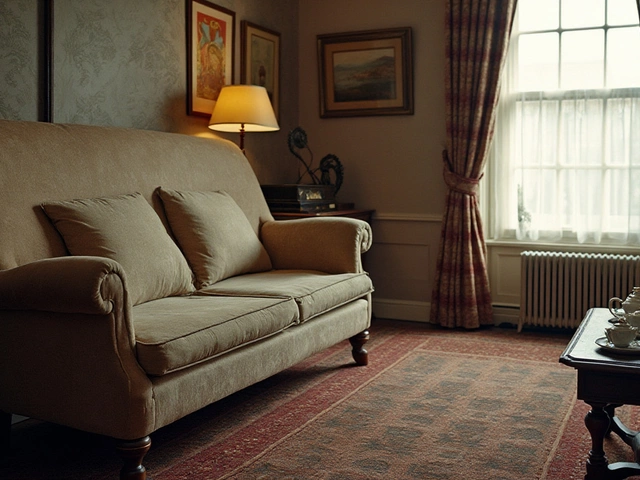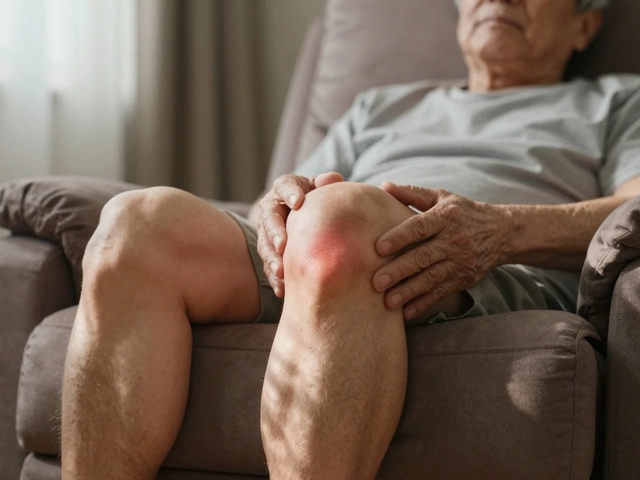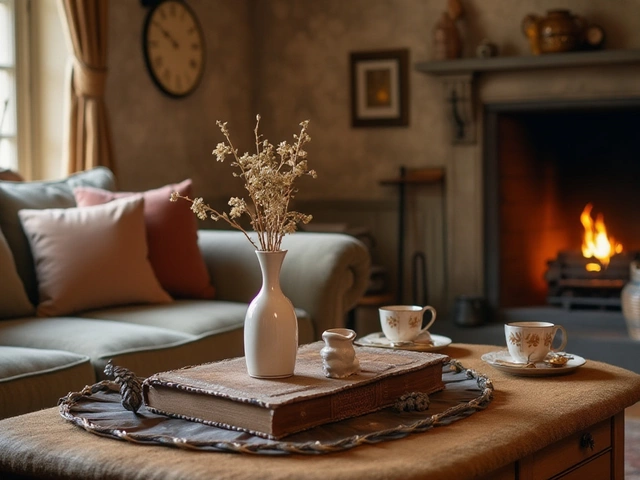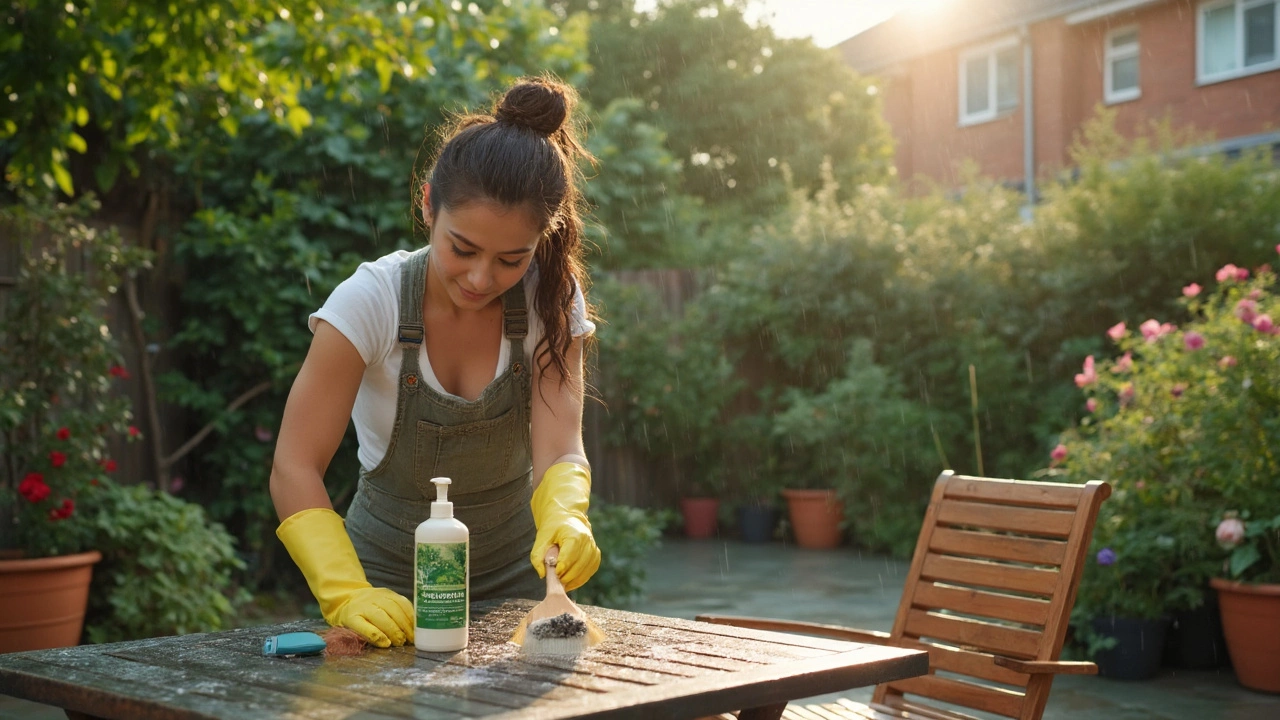 17
Jun,2025
17
Jun,2025
Ever sat down on your patio chair only to get hit by that stubborn musty smell? Mold and mildew love outdoor furniture, especially when it's left wet or dirty for just a few days. Once that stuff starts growing, it can turn cushions slimy, leave plastic streaky, and even eat away at wood. Turns out, sunlight and fresh air alone aren't enough. Mold is sneaky—it hides in tiny cracks and loves humid weather, rainstorms, and even morning dew.
The good news? Keeping your outdoor furniture clean and dry doesn't have to be a chore. The trick is to stop mold before it starts. Even small habits—like wiping down surfaces after a storm or flipping the chairs upright after a rain—can make a huge difference. Regular checks for little black or green spots let you catch the problem while it's still easy to fix. Honestly, when you know what to look for and how to handle it, dealing with mold is way less of a headache.
- Why Mold and Mildew Love Outdoor Furniture
- Quick Daily Habits That Stop Mold Fast
- Deep Cleaning: Go Beyond Wiping Down
- Weatherproofing and Smart Storage
- Choosing Materials That Fight Mold
Why Mold and Mildew Love Outdoor Furniture
If you’ve ever noticed those weird fuzzy patches or streaks showing up on your outdoor chairs or cushions, you’re looking straight at mold and mildew. So why do they pop up so fast out there? The answer is simple: mold and mildew thrive on moisture and organic material. Outdoor furniture checks both boxes. Humid days, rainy nights, and even morning dew set up the perfect hangout spot for them—especially if your cushions or wooden tables aren’t completely dry.
Let’s break it down. Mold is a fungus. It spreads by shooting out tiny spores. These spores are everywhere—floating in the air, landing on your stuff, just waiting for a wet spot. Most patio cushions, wood slats, and even some plastics have little pores or grooves where water gets trapped. Add some heat from the sun, and bam, the spores wake up and start growing.
Not all furniture is at equal risk, though. Check out this data that shows how long mold spores can survive and how quickly they start growing if they find the right environment:
| Surface | Time for Mold to Start Growing (Hours) | Spores Can Survive (Months) |
|---|---|---|
| Cloth Cushions | 24-48 | 6-12 |
| Wood | 24-72 | 12-24 |
| Plastic/Resin | 48-72 | 12-24 |
If your chairs are left damp for even a day or two, there's a good chance you’ll get spots. Add fallen leaves, pollen, or food crumbs, and you’re basically feeding the mold. Areas without much sunlight, like shady spots under trees or under the deck, are mold’s favorite parts of your yard.
Even if you buy "waterproof" cushions, water can still sneak in through zipper seams or tiny holes. So don’t trust the label entirely. At the end of the day, the real problem isn’t just the rain—it’s anything that keeps your outdoor furniture wet and dirty. Knowing this is your first step to shutting down mildew before it takes over your backyard hangout.
Paying close attention to mold prevention saves you tons of cleanup and keeps your outdoor space ready for that next cookout or coffee outside, instead of smelling like an old basement.
Quick Daily Habits That Stop Mold Fast
If you want to keep mold prevention simple, get into a quick routine. It doesn’t take much—just a few minutes every day can make a huge difference. Mold and mildew need moisture to get started, so the main goal is keeping stuff dry.
- Wipe down surfaces: After rain, grab a towel and dry off your chairs and tables. Focus on seams, joints, and under cushions—these spots trap water and are mold’s favorite hangouts.
- Flip or stand cushions upright: When cushions stand on their side, they dry out quicker. This works way better than leaving them flat.
- Brush away leaves and dirt: Debris holds in moisture and feeds mold. Use a soft brush or even your hand to swipe away gunk from corners and under seats.
- Move furniture into the sun: Direct sunlight dries out furniture fast. If you can, shift pieces out of the shade for a couple hours. Sunlight doesn’t just dry; UV rays actually kill some types of mold spores.
Skipping these little habits lets moisture build up, and that’s when trouble starts. Take just five minutes to walk around the backyard and check over your furniture as part of any outdoor routine—like when you’re taking out trash or watering plants. It’s faster than trying to deep-clean stains later.
Here’s the thing—humidity is the biggest culprit. According to a coastal home survey in Florida, homes with regular outdoor furniture care had mold problems just 12% of the time, compared to 43% for those who didn’t do daily wipe-downs. Small changes really add up.
| Daily Habit | Estimated Time | Mold Risk Reduction |
|---|---|---|
| Wiping Surfaces | 3 minutes | High |
| Standing Cushions Up | 1 minute | Medium to High |
| Brushing Debris | 1 minute | Medium |
| Moving to Sunlight | 2 minutes | High |
Stay on top of these routines and you’ll stop most mold before it even gets a chance to grow. Best part? You’re not just helping your furniture look better—you’re making sure it lasts for years.
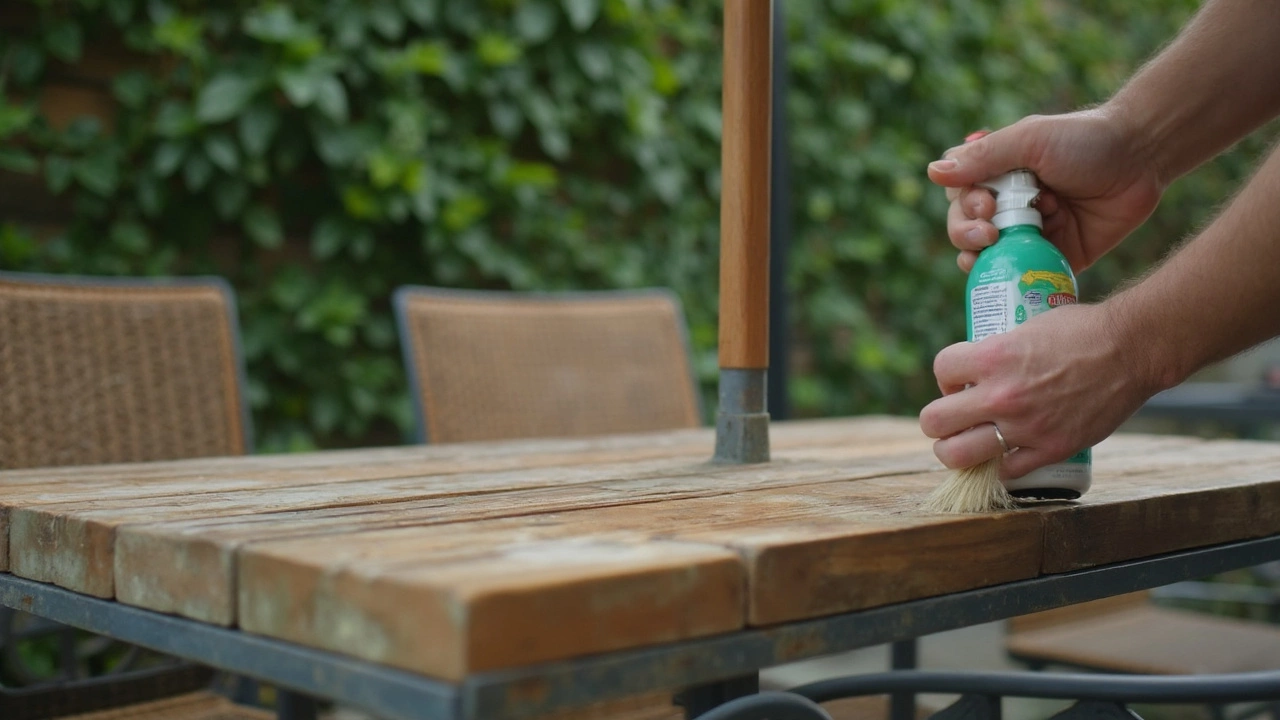
Deep Cleaning: Go Beyond Wiping Down
Just giving your outdoor chairs or tables a quick swipe isn’t enough once mold or mildew has settled in. These aren’t just surface-level problems—the roots actually dig into fabric, wood, and even plastic. For real results, it takes a hands-on, step-by-step clean that goes deeper than a damp cloth.
First, grab a bucket and mix a simple cleaning solution. Most pros swear by one cup of white vinegar to every gallon of warm water. This combo busts through mold and mildew without damaging your stuff, and it’s safer for pets and plants than bleach. If things are in rough shape, a splash of mild dish soap helps break down grime.
- Take cushions off and set them out flat (direct sun helps while you clean).
- Dip a soft brush or rag in your vinegar mix. Scrub every inch—especially seams and cracks, where mold loves to hide.
- For stubborn spots, sprinkle a bit of baking soda right on them before scrubbing again. This lifts stains and kills odor fast.
- After scrubbing, rinse everything down with a hose. Leaving soapy or vinegary residue attract more grime later.
- Let every piece dry completely in the sun before you put cushions back or move furniture back to shade. Mold hates sunlight and dry air.
This method works on most materials—plastic, metal, even wood. Just avoid power washers on painted surfaces or softwoods since you might strip away the finish. For deep-set stains on cushions, toss the covers in a washing machine (check tags first). If there’s still a smell, hit them again with vinegar spray.
The secret is being thorough and doing this about once a month during humid seasons. Deep cleaning sends the message to mold prevention—you’re in charge, not the mildew.
Weatherproofing and Smart Storage
Keeping mold and mildew away isn't just about cleaning. A lot depends on how you handle weatherproofing and where you stash your outdoor furniture when you're not using it. Rain, humidity, and even pollen can chew up your gear if you let them. Covering up is step one. Invest in breathable, water-resistant covers—not tarp or plastic sheeting that traps moisture. Trapped air is a mold magnet.
For furniture that stays outside year-round, sealing wood with a good outdoor polyurethane or oil finish is a game-changer. Don't forget metal either—a spray of rust-resistant paint goes a long way. Even plastic or resin pieces benefit from a spray-on protectant made for outdoor furniture care. Tighten up screws and clean under cushions, since mold loves dark, hidden spots.
Your furniture needs time to dry out. After a heavy rain, uncover everything and spread out cushions on their side if you can. Give them sun and air. Even just tilting tabletops or standing chairs can help water run off more quickly, cutting down on that dampness mold needs.
- Store cushions and soft items in a dry spot, like a storage chest or your garage. Never bundle up wet cushions—they’ll smell in just a day or two.
- Lift or move wooden and metal pieces off wet grass or soil. Put rubber pads under chair legs if needed to keep them dry and mold-free.
- If you use a shed or a small outdoor closet, be sure it’s got some airflow. Even small vents or leaving the door cracked open can stop that stale, closed-up smell.
Smart weatherproofing and storage not only stops mold—it also gives your stuff a much longer life. So next time you grab the hose or run out to cover the chairs, know you’re not just cleaning up, you’re actually protecting your whole setup from future headaches. For mold prevention on outdoor furniture, these steps make the biggest difference long term.

Choosing Materials That Fight Mold
If you want less scrubbing and fewer musty surprises, start by picking the right furniture in the first place. Not all garden chairs, tables, or cushions are created equal. Some materials basically invite mold prevention problems, while others are way easier to keep fresh year-round.
Plastic and resin furniture are total lifesavers outdoors—mold barely stands a chance here because water runs right off. Aluminum and powder-coated steel are solid picks too, since they don’t soak up moisture and a quick wipe keeps them clean. Wood is trickier: teak, cedar, and eucalyptus have natural oils that resist mold better than pine or untreated softwoods, but even these need a little upkeep. Applying sealant yearly makes a big difference.
Now, cushions and fabrics? They’re mold magnets if you choose the wrong ones. Look for “outdoor” or “weather-resistant” tags—meaning they’re made from polyester, acrylic, or olefin instead of cotton. These fabrics dry way faster and don’t soak up every drop. Plus, lots of them have a special coating that keeps water—and mold—out. Never underestimate the difference between regular and outdoor fabrics. It’s huge.
One more thing: avoid rattan or untreated wicker outdoors unless you’re a fan of yearly mold battles. If you love that woven look, go for synthetic “all-weather” wicker. It’s usually just plastic disguised as the real stuff, and it handles rain way better.
So, quick summary—pick furniture that doesn’t trap water, pick cushions made for the outdoors, and seal up any wood you can. You’ll save yourself so much effort (and a lot of elbow grease) the next time mold season rolls around.

